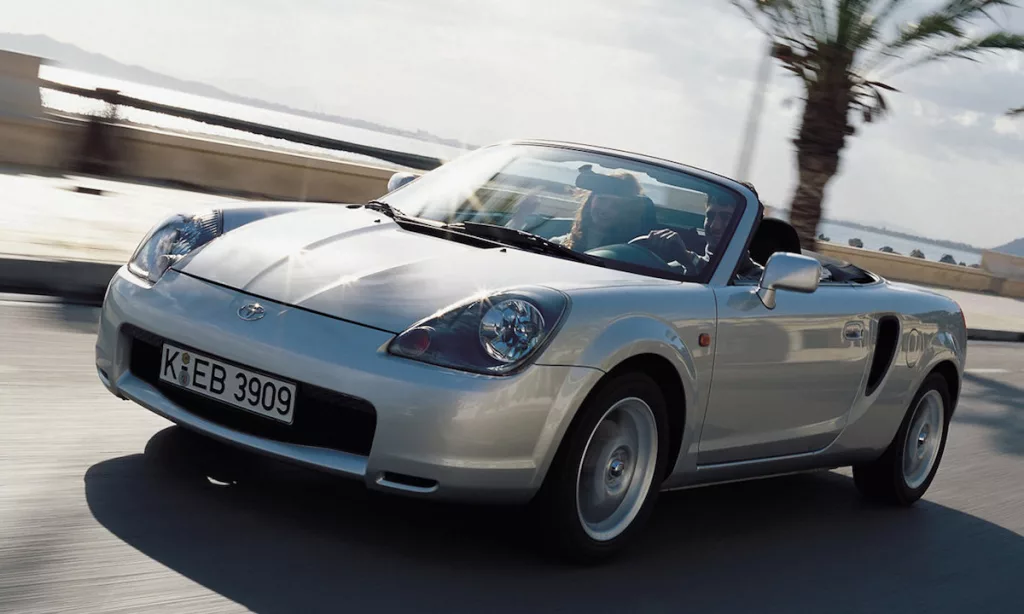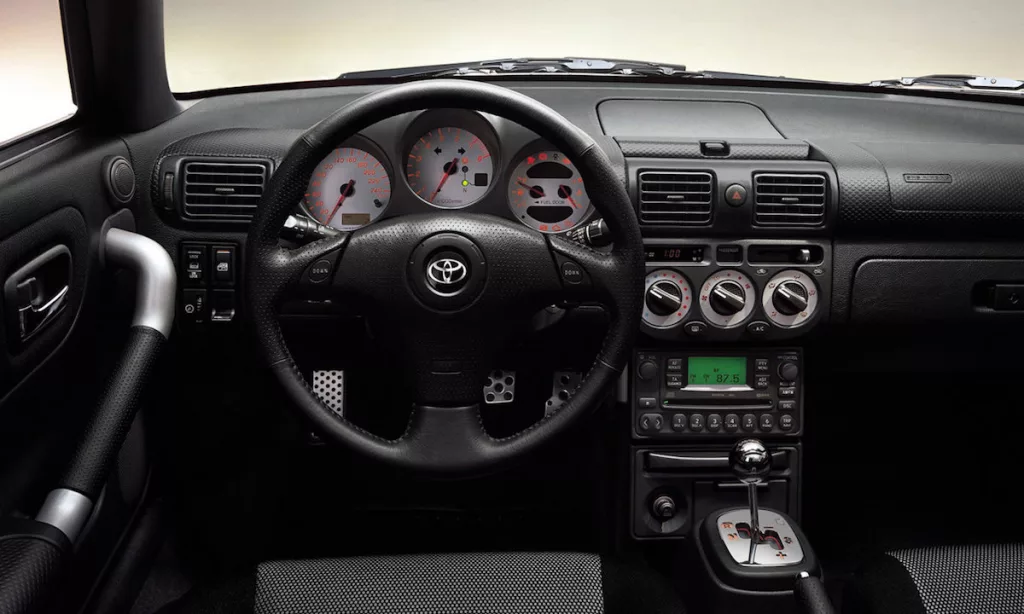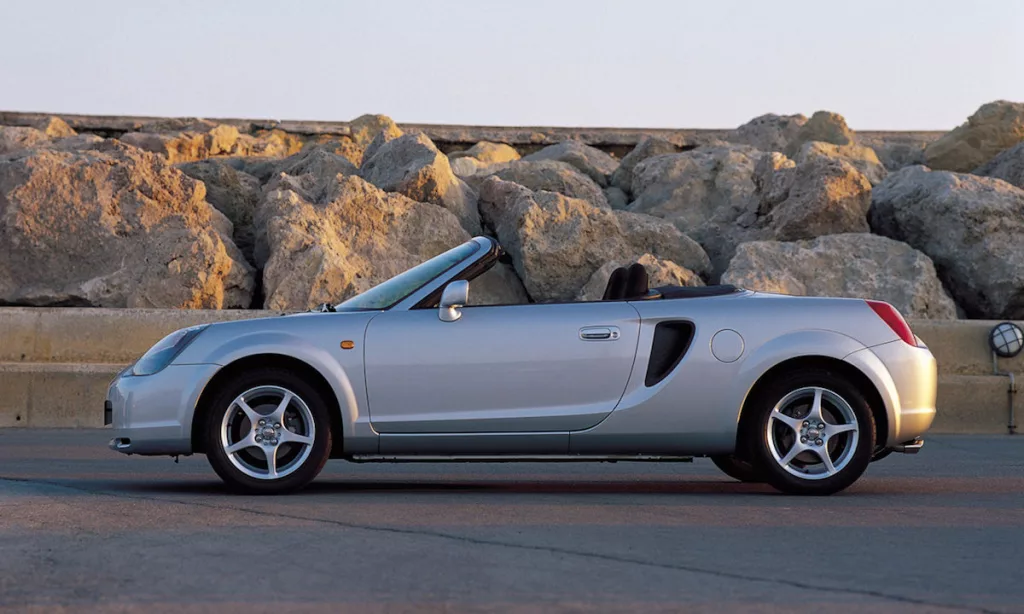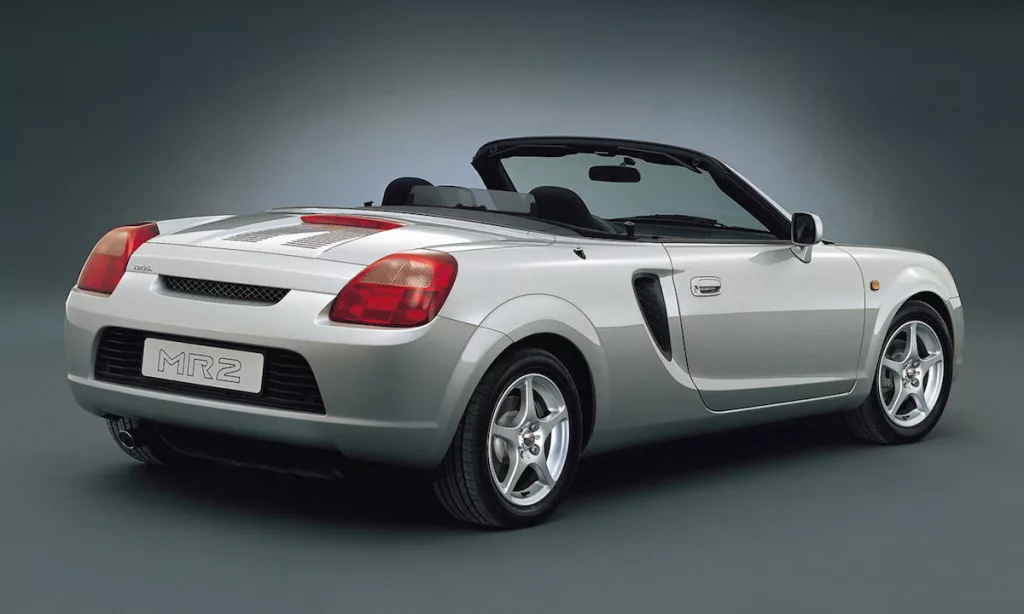Toyota MR2: The good, the bad and the ugly
While the second-generation MR2 sported faux-Ferrari looks, the third-generation iteration looks more like a Porsche Boxster.

The first MR2 arrived on local shores in 1986, the second in 1991 and the third in 2001 – to coincide with Toyota South Africa’s 40th birthday. A solid complement of 500 third-generation MR2s was allocated to the country and CAR Mag’s classics expert Peter Palm details all the good, bad and ugly when buying.
Looking for your next new or used Toyota? Find it here with CARmag.
Packaging
As with the MR2’s predecessors, it was a car built with zero compromises – no front engine, nor front- or rear-wheel drive. Rather, it had to have the classic mid-engine layout driving the rear wheels to attain motoring’s holy grail of a perfect front/rear mass balance. The decision was also made to go for an open-top configuration with a fabric soft-top. A removable hard top was optional and with no tonneau cover available, the hood has to be raised when parked to prevent sun, rain or dust from entering the cabin. The canopy’s simple manual operation means there are no complex motorised components that can fail.
Luggage space was not seen as a priority, so there is a lot of plastic covering the under-bonnet area, with a space-saver spare tyre taking up most of the remaining room. This leaves just enough capacity for a picnic lunch, as long as you don’t overdo the sandwiches. A couple of lockable storage bins additionally lurk behind the seats, but that’s about it. The total space measured by ourselves totalled just 49l. While cloth upholstery was standard, most examples should have the optional leather seats. Instrumentation is by way of black-on-white dials, with matching circular controls for setting the heating and air-conditioning. A fold-up windscreen behind the seats actually works to reduce wind buffeting.

Powertrain
What Toyota does best is build engines that run seemingly forever. In the case of this MR2, it is the long-stroke, 1.8l 1ZZ-FED with variable valve timing for its 16 valves. Both head and block are cast aluminium with cast iron cylinder sleeves. It develops a functional if not earth-shattering 103kW and 170N.m. No turbo means revs must be chased to release its full potential. The five-speed gearbox is slick and the short stick perfectly falls to hand. The is also fortunately no worrying about tricky cambelt swops as a timing belt is employed to drive the valves. The sequential fuel injection (with 12 holes per injector) is supplied by Denso.
Related: Review: Toyota Stallion
Suspension and Steering
MacPherson struts do duty all round, and the rack and pinion steering uses electro-hydraulic assistance. Stopping ability is enhanced by ABS and the wheels are 15 inches in diameter, which keeps rubber replacement costs on the manageable side.

Which MR2 to get?
We believe that this third generation is the best and will increase in value with time. Red seems to be the most popular colour, followed by yellow. As always, familiarity with a potential purchase’s service history is a must before signing on the dotted line. As the sump holds just 3.7l, regular oil changes (and checks for required top-ups) are essential to maintain the expected reliability of these engines. Thinking about it, these cars are a lot rarer than the popular Mazda MX-5.
Interesting Facts
Historically, Toyota concentrated on high-reliability transport and seldom on supercars or motorsports. The standout exception was the 2000 GT sold from 1967 to 1970.
While the second-generation MR2 sported faux-Ferrari looks, this final third-generation iteration reminds us more of a Porsche Boxster – and that has to be a good thing.
With reference to its monicker, a degree of mirth has continued to prevail throughout the car’s existence, much owed to (intentional) linguistic and cultural misunderstanding. In English ‘MR2’ could be pronounced as ‘Mister 2’. In Japanese, the first two numerals are written, ichi and ni. Also, when addressing a man respectfully one would add san to his surname. San means mister. Therefore, ‘Mister 2’ could translate as Nisan. Not quite the same spelling as Toyota’s competitor 300km to the west in Yokohama – but close.

Availability and Prices
Although over 20 years in age, this is not an issue for Toyota. Sportscars rack up much lower mileage than daily drivers, and as a result, these should have long lifespans. The main challenge with mid-engined cars will remain the difficulty of engine access, should repairs become necessary. An analogy could be made with EVs – when it’s time arise to replace the battery, the maintenance costs involved for the next 10 or more years are immediately amortised. With the MR2, it may be necessary to remove the engine, fully overhaul it and split the cost over the same period of a decade or more. When viewed this way, the cost can be easily justified.
Expect to pay very reasonable prices of around R100 000.

MR2 Fast Facts
Model: Toyota MR2
0-100 km/h: 8.29 seconds
Top speed: 201km/h
Fuel consumption: 10.1l100km (index)
Price: R230 460
CAR test: August 2001
Browse thousands of new and used cars here with CARmag.
The post Starter Classic: Toyota MR2 appeared first on CAR Magazine.




